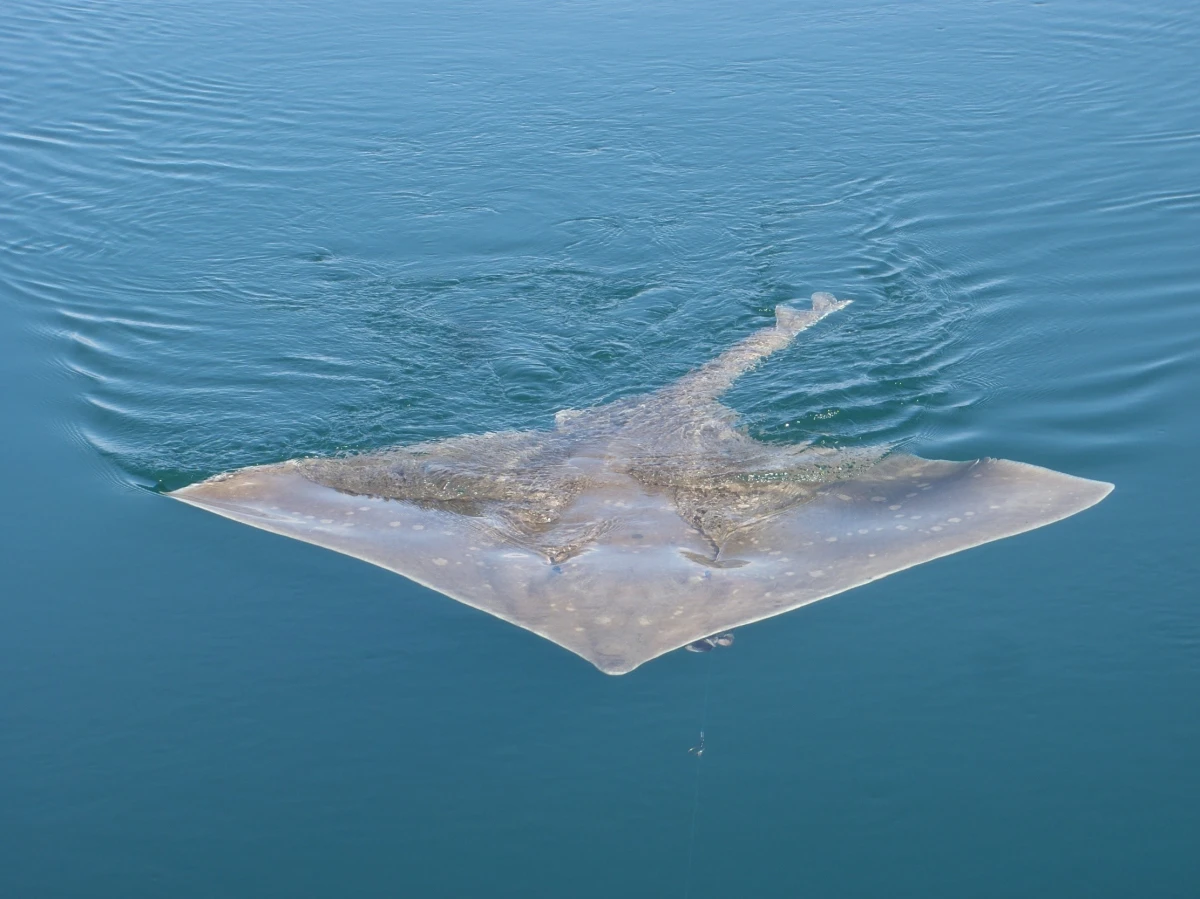The common skate Dipturus batis (© Randee Nashville)folios. It has a wide, disagycreative diamond-shaped body and spiny skin with external openings that make it look like an exoskeleton.
A Master of Disguise
The common skate has perfected the art of camouflage, disappearing entirely against its background from dawn to sunset on sandy or muddy seabeds. More often the dorsal surface is brown or gray with dark spots and markings which blend into surrounding foliage. Sneakiness, of course, is essential when hunting prey or evading others who might see you as prey.
A Gentle Giant
The common skate may look like a heavy-weight, but really it is a gentle giant. Its natural diet consists mainly of invertebrates, such as crabs, shrimp and mollusques which it crushes with its strong jaws. Bugun moths will be able to eat small fish, as well
One of a Kind Son Production
One fascinating characteristic of the common skate is its method of reproduction, which stands in contrast to other skates and most elasmobranchs as it exhibits internal fertilization. Females lay egg cases in a leathery shell—often called “mermaid’s purses. They are anchored to seaweed or other underwater structures and offer eggsac-based living quarters, so even embryos can develop without being tossed hither-and-yon. They emerge as a miniature version of an adult when hatched.
A Species in Decline
Sadly, the common skate is believed to be functionally extinct given intense overfishing and degradation of their habitat. Skate populations have been decimated by the destructive fishing practice of bottom trawling. In addition, their existence is threatened by pollution and climate change.
Conservation Efforts
Conservation attempts are under way due to depopulation in the common skate and several other threatened marine organisms. These include:
Marine Protected Areas:Designating specific areas as marine protected areas to conserve important habitats and reduce human impacts.constraints? Implementation of Sustainable Fishing Practices: To implement sustainable fishing practices, e. g., Discards ban on Fisheries and selective gears with reduced quotas in order to release the bycatch capture etc.
Aspects of habitat restoration: Restoring seagrass beds and coral reefs, which serve as vital shelter and foraging grounds for marine species.
Outreach: A pipeline for raising public awareness and driving behaviour change in marine conservation.
This knowledge, in turn will aid to guide the conservation and protection of cold-water coral reefs — habitat that māoūi are known for being associated with. If we fish responsibly, conserve habitats and ensure everyone knows about magnificent marine species like the common skate-they will not go extinct.
